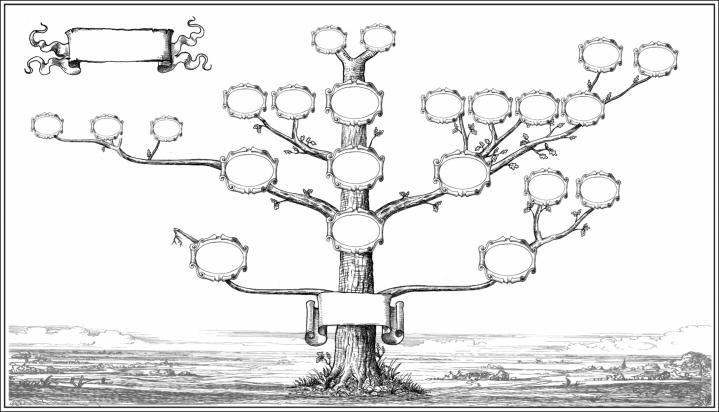In North America, the term “generation” is often used to designate groupings of people connected by proximity of birth year. Popular usage includes references to specific groups—”Millenials” or “Generation X,” for instance—as well as more general discussions of the “generation gap” (Foster 11). But what is a generation, exactly? Two broad categories of the term are familial generations and social generations.
As the name suggests, familial generations are ancestor/descendant relationships within families. The Oxford English Dictionary describes this understanding of generation as “a set of members of a family, especially the offspring of the same parent or parents, regarded as a single step or stage in descent.” The earliest citation provided for this usage dates from 1387 (OED). Relationships between generations of family members are a common theme in YA literature.
Social generations, also known as “cohorts” or “birth cohorts” (Foster 13) are groupings of people born in the same time periods, and said to share common “beliefs and attitudes” shaped by significant historical and cultural events (Giancola 33). The idea of social generations has been questioned because it homogenizes the experience of large swaths of people (Foster 18) and privileges one facet of experience over others potentially more important, such as race, class, and gender (Giancolo 33). The experiences of minorities and immigrants to North America may also not be accounted for (Giancolo 33). Although unsupported by research, the idea of social generations is important because of its “persistence as an idea” in popular (and academic) consciousness and discourse (Foster 11). Social generations identified in the Western world include the following, summarized from Wikipedia and Giancolo:
The Lost Generation, 1883-1900
The Greatest Generation, 1901-1924
The Silent Generation, 1925-1942
Baby Boomers, 1946-1964 or 1943-1960
Generation X, 1961-1981
Millenials or Generation Y, 1982-early 2000s
Generation Z, early 2000s-present
How long is a generation?
A generation can also be understood “as a rough measure of historical time,” based on “the average time it takes for children to grow up, become adults, and have children of their own, generally considered to be about thirty years” (OED). Other estimates set the length of a generation to 25 years, while acknowledging that in the past, the extent of a generation may have been closer to 20 years due to shorter life spans (Ancestry.com).
Intergenerational relationships
…are simply relationships between people of differing generations, whether social, familial, or separated by roughly twenty to thirty years’ age difference.
Demographic changes over the last century have influenced the nature of intergenerational relationships over the last century (Silverstein). As mentioned earlier, people live longer: in the 1900s, life expectancy was 48 years, compared to nearly 78 years in 2005 (Silverstein). Consequently, “family members now spend more time occupying intergenerational family roles…than did any earlier cohorts” (Silverstein). The increased participation of women in the workforce, along with changes in marriage and life choices starting with the baby boomer generation—who began to marry later, have fewer children, and divorce more often—are also significant factors affecting intergenerational relationships (Silverstein).
Taken together, these shifts, while certainly not true for everyone, have several potential consequences: teens are more likely to have grandparents living throughout their entire childhood and beyond, teens are more likely to have divorced parents, mothers may spend less time at home, and young people may have more opportunities for intergenerational encounters outside the home, such as in the workplace. These changes may be reflected in young adult literature.

